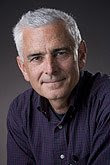Thursday, April 15, 2010
Particle Accelerators - Part II
Monday, April 12, 2010
Particle Accelerators - Part I
Tuesday, February 10, 2009
Collaboration between Fermilab, Indian institutions sets stage for future accelerators
Monday, February 2, 2009
DESY and India to collaborate in advanced materials research
DESY and India to collaborate in advanced materials research
DESY has welcomed India as a new partner for a close collaboration in photon science at DESY's light sources FLASH and PETRA III. On 28 January 2009, a delegation of scientists and Government representatives from India and the DESY Directorate signed a Letter of Intent to establish a scientific collaboration in nano science, nano technology, and advanced materials research. India will have access to DESY's cutting-edge light sources and in return contribute hardware, manpower and services.
During their visit to DESY, the high-level delegation led by Professor C.N.R. Rao, Chairman of the Scientific Advisory Council to the Prime Minister of India, discussed an Indian engagement in the world's most brilliant source for hard X-rays, PETRA III, and the soft X-ray laser FLASH.
"This is a great moment for Indian science, and the collaboration between Indian institutions and DESY will significantly add value to the excellent research being done by Indian scientists in nano science, nano technology and advanced materials. The PETRA III and FLASH facilities will open new windows for scientific enquiries and novel scientific results," said Professor Rao.
"We are delighted to welcome India as a partner in our projects PETRA III and FLASH. We are sure that Indian scientists can make important contributions to the scientific results at these light sources," said Professor Albrecht Wagner, Chairman of the DESY Board of Directors.
The Indian delegation's visit to DESY followed a meeting between India and a delegation from DESY in Bangalore in September 2008. The discussions in India and at DESY led to the following key agreements for collaboration:
In order to serve the diverse scientific interests of its scientific community, India is interested in having privileged access to the beamlines of PETRA III.
India will make substantial contributions towards hardware, manpower and other services.
The formal agreement will be signed shortly at Government level.
DESY is one of the world's leading centres for the investigation of the structure of matter. DESY develops, runs and uses accelerators and detectors for photon science and particle physics. DESY is a national research centre supported by public funds and member of the Helmholtz Association
Sunday, January 25, 2009
First digital self-excited loop (SEL)
Wednesday, November 19, 2008
Inner space, outer space: quantum space
 Craig Hogan, head of the Center for Particle Astrophysics, wrote this week’s column.
Craig Hogan, head of the Center for Particle Astrophysics, wrote this week’s column.Saturday, October 4, 2008
LHC Grid Fest + Webcast

.jpg)

